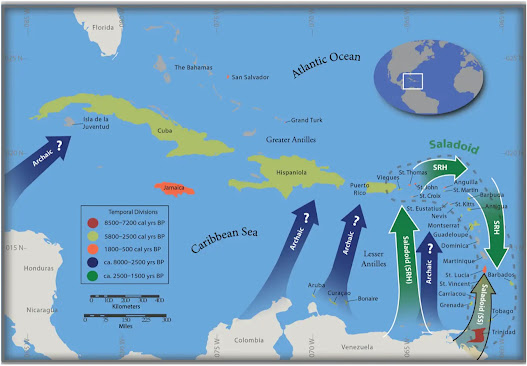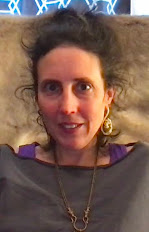Mike Ruggeri Special Report
in association with Aztlander
Tuesday, August 31 • 7:00PM Central
Mesoamerica/Ancient Southwest Chocolate Trade
Trade between Mesoamerica and the Ancient Southwest in macaws, parrot
feathers, copper bells, turquoise, turkeys, pottery was well known to
archaeologists for some time.
Only recently have we become aware of the large chocolate trade between Mesoamerica and the Southwest from the 9th Century on.
Researcher
Patricia Crown had seen cylindrical vessels at Maya sites that previous
researchers discovered contained chocolate. Using sophisticated new
technology, the chemical building blocks of chocolate, theobromine and
caffeine, were found in these vessels.
In 2009, Patricia Crown was
looking at cylindrical vessels that looked like the ones she saw at Maya
sites at the Ancestral Pueblo site of Pueblo Bonito. She saw these
vessels contained pigment decoration that was applied in the same manner
as the Maya used in decorating their vessels. She then ascertained that
these vessels may also contain the chemical proof of chocolate. So she
and her team analyzed the vessels in the lab.
[photo: Room 28 Pueblo Bonito]
In
Room 28, at the Site of Pueblo Bonito, she found layers of these types
of jars, and with further digging, found an astounding 200,000 ceramic
items. She sorted out the ones that came from the cylindrical type and
had them tested for theobromine and caffeine. Sure enough, the tests
came back positive, and we now know that the Ancient Puebloans were
trading for chocolate grown 1,200 miles to the south in Mesoamerica.
These date to 1000 CE.
[photo: Chaco Chocolate Vessel]
The
Mesoamericans were drinking chocolate as a valuable beverage going back
at least 3,500 years. They were using chocolate beans as currency. And
we have recently found that they were using chocolate as a means of
payment for work and services.
Further studies in smaller
housing units in Mesoamerica, where poorer people lived, contain those
cylindrical vessels that have tested for the presence of chocolate. So
chocolate was a huge commodity in the Mesoamerican economy.
Patricia
Crown followed up on these studies and did the same research on these
vessels in smaller units in the Chaco Canyon, close to Pueblo Bonito and
further afield, and found the same phenomena. Poorer folks had access
to chocolate, probably as payment for services.
The Chaco
culture had its florescence from 850-1150 CE. So chocolate was finding
its way to the Chaco culture from Mesoamerica as early as 1000 CE, as we
know from dating the Chaco vessels.
Then came the huge
surprise, still a mystery. Dorothy Washburn, from the University of
Pennsylvania, tested shallow “Abajo Red on Orange” bowls at the site of
Alkali Ridge, far to the north of Chaco in Utah. And to her surprise,
they contained theobromine and caffeine – in other words – chocolate!
The
folks at Alkali Ridge were an extension of the Ancient Puebloan culture
far to the south, and these Red on Orange bowls were different from the
usual pottery found in the area. And they date to 780 CE, a full two
centuries before chocolate at Pueblo Bonito.
This is an
astounding find for many reasons. How did this happen? Why is this so
much further north from Mesoamerica and yet the dates are 200 years
earlier than the Chaco Culture dates? Why have there been no finds of
chocolate between this Utah site and the New Mexico sites on the way to
Utah? How did it arrive there? Who transported it? Mysteries now abound.
SPEAKER: Michael Ruggeri is Professor Emeritus from the City Colleges of Chicago.
He is the moderator of the largest and oldest Ancient Americas listserv on the world wide web: Aztlan. He also moderates an Andean list and a Mound Builders list. Mike serves on the Board of the Illinois Association for the Advancement of Archaeology and the Board of the Chicago Archaeological Society.
He has taught courses on Mesoamerica, Mexican History, Latin American History among other courses in his 33 year teaching career. He maintains over 50 different web pages on all aspects of the Ancient Americas.
Mike Ruggeri’s Ancient Americas Web Pages
https://mikeruggerispages.tumblr.com
For the Chicago Archaeological Society, he contributes a regular column to our newsletter, the CODEX, and has given many lectures to the Society on various Ancient Americas topics.
This program is free and open to all.
Zoom address:
https://us06web.zoom.us/j/83950845951






































